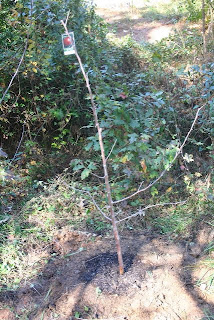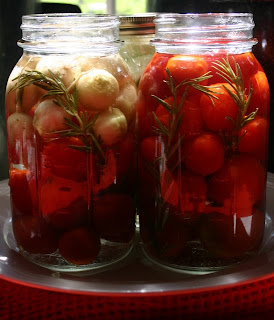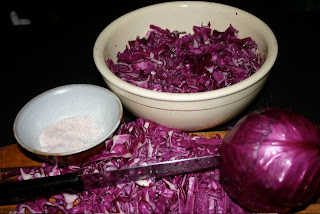
I started on Facebook a few years ago because a couple of my friends did. We did the poking thing and played the games that went around. After a while as more of our friends joined it became a good way to communicate with others about subjects of mutual interest, like where and when the next party was going to be. Soon we were using it to spread the word about causes we supported or were against. It became a way to become engaged in building the community we aspire to. More friends came on board, then friends of friends, then people we met ( at the
Earl mostly), then people we don't know but who have heard about the work we do.
I started this blog a little over 2 years ago to share our experiences as we went about developing our suburban permaculture model. Slowly, very slowly, the readership has increased as I have learned how to attract people to it by using other forms of social media.
Like Twitter. I joined twitter about a year ago but never did anything with it until I went to an
LRBN workshop led by Lady Rogue of
Rogue Apron fame (whom I first learned about on Facebook). She taught us how to utilize twitter to make useful connections. So I jumped back into the twitterverse with my newly learned skills. I began to make connections with people with whom I share common interests (but don't always agree with) and I began to learn things. Soon I was sharing my knowledge and experiences with them as well. Again it has become a tool for building community.
I found out about other online communities such as Foodbuzz.com where people share ideas about food. Through Foodbuzz I connected with some really good food bloggers who write about nutrition, cooking, local food systems and share great recipes. All of these networks are interconnected so often I can't remember where I connected with some one first.
So what does this have to do with baking crackers? It goes something like this. I connected with a guy on twitter @
theoliveoilblog. He is a self-described "4th generation olive oil producer from Sicily." He tweeted that he was getting started on Foodbuzz and he would send a bottle of olive oil to the 1st 3 people who buzzed him. I jumped over there and buzzed him up and last Monday I got a bottle of fine single estate extra virgin olive oil. I was excited to try it out. But what to make first?
Saturday I was ready to do something with the turkey left over from Thanksgiving so i made some chili and some stock. That put me in the mood to cook more stuff. It was a literal cooking frenzy the rest of the day. I made cheese straws (recipe on
Foodbuzz). I decided to make some chicken liver pate´with the chicken livers I got from Natures Harmony Farms last summer. (they have been in the freezer :p). I figured I needed some crackers to the eat the pate´on so I made sesame olive crackers with the new olive oil. They turned out great (recipe below). I updated my facebook status
Duane Marcus making pickled radish, chickn liver pate´, cheese straws, turkey chili, turkey stock, racking blueberry hooch, rockin out to my fave tunes
I got a facebook notification that a friend had made a comment about my status.
Need your pate recipe - post on Funny Farm??? Or guest post on The Frugal Hostess?
She was referring to her blog
The Frugal Hostess which is my most favorite blog of the many I read regularly. I jumped at the chance to do a guest post on her blog because I greatly respect what she does and I thought it would be really fun to emulate her totally whacked out style (it was) and because she has way more readers and followers than I do so it will be good exposure for me and my blog. This post links to her blog and my guest post will link to this post and the community gets bigger and stronger. I'm not sure from which social media channel i first discovered her because she's on all of them too. We are now personal FB friends and when she replied to my email after i sent her my guest post she said she heard through the grapevine that i frequented the
Earl and that we had some friends in common. So we are planning to meet at the Earl soon for a beer or 3 and get to know each other in the physical world which is what really matters, right?
Oh, yea. If you want a really good chicken liver pate´recipe check out my guest post on The
Frugal Hostess blog :)
How 'bout them crackers!
Sesame Seed Olive Oil CrackersIngredients:
1 1/2 cups semolina flour
1 1/2 cups white whole wheat flour (or all-purpose flour)
1 teaspoon fine-grain sea salt
1/4 cup sesame seeds
1 cup warm water
1/3 cup extra virgin olive oil
Directions:
Whisk together the flours and salt. Add the water and olive oil.
Mix together and then knead by hand on a floured board or counter-top until all ingredients are well blended and a good dough is formed. The dough should be just a bit tacky.
When you are done mixing, shape the dough into a large ball and coat with some olive oil. Cover with a clean dishtowel and let rest at room temperature for 30 - 60 minutes.
Preheat the oven to 450F degrees.
After the rest period cut the dough into quarters. Roll a section out on a floured board or counter top about 1/8" thick. Use a knife or pizza cutter to cut the dough into what ever shape you want. You can also use a biscuit cutter to cut round crackers or various cookie cutters to make other shapes.
Place the crackers on a lightly floured cookie sheet and bake about 10 minutes or until golden brown. Repeat with the remaining dough.
Store in an airtight container after they cool.Makes a 24-36 small crackers.























































